All about dwarf birch

Knowing everything about dwarf birch is necessary not only for general development, its description is quite important for fans of extraordinary landscape design. Everything is interesting: where does the dwarf birch grow, what is the small birch "nana" and other subspecies. You should also pay attention to the type of thickets in the tundra, on the "Golden Treasure", "Golden Dream" and other species.
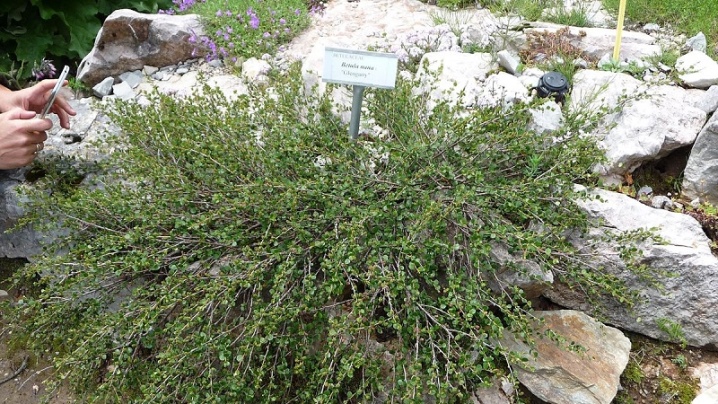
Description
Dwarf birch is a type of woody plant that, according to the current environmental classification, is “of least concern”. But such a general characteristic is unlikely to satisfy interested people. Other names for this species are dwarf and dwarf birch. Outside botanical literature (in everyday life) they say about:
- slate;
- yernik;
- birch slate;
- Karl;
- yernik;
- birch dwarf birch;
- Yernik-slate.
Dwarf birch grows in almost the entire European and Canadian territory. The exception is the southernmost regions of the EU and Canada, respectively. This species also lives in the natural zone of the tundra. His presence is noted in:
- north-western regions of Russia;
- West Siberian and Yakut localities;
- various areas of the Chukotka and Kamchatka peninsulas.
Outside the northern regions, dwarf birch can be found in the mountains of Eurasia at an altitude of at least 300 m. A suitable habitat for it is created at altitudes up to 835 in the Scottish Highlands. And in the Alps, this low shrub is found up to a level of 2.2 km above sea level.
Dwarf birch forms very dense thickets in the tundra regions. They are also seen in the alpine zone and in moss bogs.
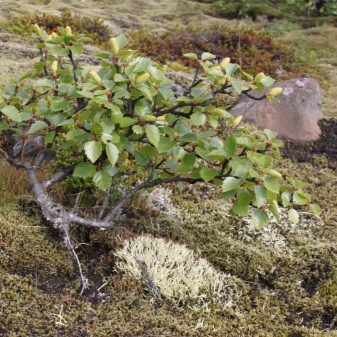
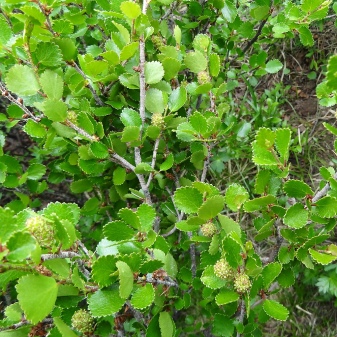
The plant is classified as a deciduous shrub with intensive branching. Its height usually varies from 0.2 to 0.7 m.A growth record of 1.2 m is officially registered. Shoots are built in a rising or spread pattern. At the very beginning of development, they are covered with velvet or a thick layer of cannon. As they ripen, the shoots become bare, acquire a dark brown or reddish with dark brown color; to this they owe their bark. The leaves are arranged in an alternate type and have a pronounced roundness. In some cases, rounded-oval leaves are found. Their length varies from 0.5 to 1.5 cm, and their width is from 1 to 2 cm. Closer to the base, a round or wide-wedge-shaped shape is typical, the top of the leaf is rounded. Serrated edges are present, but fairly blunt.
The upper edge of the sheet is colored dark green and has a glossy sheen. On the lower surface, a light green color with diffused fluffiness is more typical. Unisexual dwarf birch flowers are small and not very attractive. The length of the bracts is no more than 0.25 - 0.3 cm. The fruit belongs to the category of nuts, its length is 0.2 cm, and its width is 0.1 cm, and upon close examination, lateral "wings" are found. Dwarf birch continues to bloom until foliage dissolves. Fruiting occurs in April, May and June. The root system is built on a fibrous type, spreads rather in breadth than in depth. The plant has certainly adapted to the cunning of the northern climate. This means that it can be safely grown in more southern places - the main thing is how to choose a variety.
The trunks of miniature birches are not only low, but also deflected to the side. There are many shoots, and they branch well.Crohn does not have a characteristic convex configuration, but as if "spreads". Such a structure represents adaptation to extreme cold and reduces risks to the root system.
Important: natural plant varieties, unlike those modified by breeders, are completely unable to withstand the heat, even for a very short time.

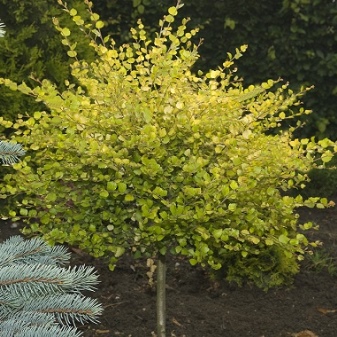
Subspecies and popular varieties
Small birch "Golden Treasure" is very popular. Like other species of the Golden group, it is characterized by extremely slow growth. By the end of the first decade of life, the tree rises to a maximum of 0.3 m in height. Its width does not exceed 0.7 m. The tallest copies of the Golden Treasure can grow up to 0.7 m and reach 1.5 m in girth.
This culture looks as impressive as possible. No wonder it is often taken to form bright accents of landscapes. The shrub is distinguished by yellow leaves that resemble lace. It is appreciated for its increased decorative effect and visual brightness. The variety is rare and highly branched, with an annual growth rate of up to 0.1 m. Flowering occurs in May and ends with foliage dissolution.
It is important to know that Golden Treasure:
- optimal for the sun and partial shade;
- does not have special requirements for the quality of the soil;
- thrives in moderately humid conditions.
Golden Dream is another small decorative type of undersized birch. It has been established that its height can be up to 1.2 m. The girth of the tree, like that of the previous variety, is capable of reaching 1.5 m. The upper part of the leaf is slightly rounded, and its base resembles a wide wedge. In summer, the foliage is green, with a characteristic black border in the center and a yellow end. "Dream" blooms in the same way as "Treasure", and it can be propagated by seeds and cuttings.
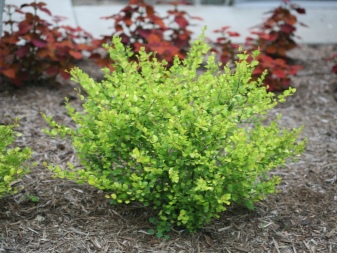
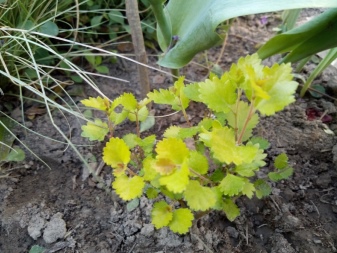
In addition to varieties, it is important to know about the subspecies. Dwarf birch "nana" (nana) forms drooping, but not sticky, shoots. Its leaves are relatively long, reaching 25 mm, and the width is about the same. You can meet this type of dwarf birch:
- in northeast Asia;
- in the high-altitude part of the alpine mountains;
- on the island of Greenland;
- on the Canadian Baffin Land.
The stickiness is typical of the exilis subtype birch shoots with single hairs. In some cases, these shoots are characterized by a complete lack of pubescence. Leaves do not exceed 12 mm in length, usually longer than wide. The plant is found in northeast Asia and North America. The overwhelming majority of dwarf birches cultivated in our country belong to the exilis category. Low-growing shrubs also include a squat variety. Important: this type of plant is included in the red books of a number of regions of Russia. Therefore, it is not recommended to get its seedlings in the wild. The plant forms bushes no higher than 1.5 - 2 m. A gray-white bark is formed on the surface of the trunk. The branches are characterized by a reddish brown tone.
The leaves of a squat dwarf birch are small and closer to the shape of an oval than on full-fledged trees. The buds of this culture have a healing effect. The earrings are relatively thick and placed in a vertical plane. The squat birch is found in the center and in the east of Europe, in Siberia and Mongolia, mainly along the river banks. It is believed to have appeared during the Ice Age. A weeping variety of dwarf birches, represented primarily by the Jung variety. The height of the plant does not exceed 6 m. Contrary to expectations, the miniature size of this variety does not diminish its aesthetic merits. The crop is optimal for small areas.
The Jung variety is perfectly combined with a variety of coniferous and deciduous trees.
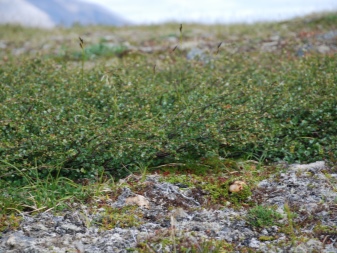
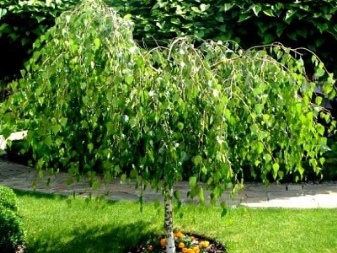
Landing features
Minimum climatic requirements do not mean that you can plant a dwarf birch anywhere, anytime. This plant is very susceptible to light and growing conditions. It is impossible to count on its normal development in the shadows. It is desirable that there is partial shade around, and even better - bright sunlight. Of course, you can plant it in the shade, but then the dwarf birch will constantly hurt and its growth will slow down.
It is recommended to select areas where melt water is concentrated in spring... In a well-lit valley, where there is no opportunity for planting more valuable crops, a miniature birch tree is the very place. This shrub survives short droughts without any risk. But only short ones - longer dryness is completely contraindicated for him. In low places, it is recommended to provide high-quality soil and drainage. But clay soil and other moisture-consuming substances cannot be used. The fact is that dwarf birch develops badly on them. Moreover, she tends to rot from waterlogging. The substrate for this plant should have an acidic or slightly acidic reaction. Planting is possible both vegetatively and generatively.
The seeds are used both immediately after harvest and in the autumn months. The planting material is cold-resistant and does not require reinforced soil insulation. But before sowing, it is required to carefully check the seeds in order to weed out bad specimens, and also thoroughly dry the selected samples. Having carefully chosen a place, a number of furrows are prepared, the depth of which reaches 0.05 and a width of 0.1 m.The furrows are separated by intervals of at least 0.3 m in width.
Important: the less time has passed between the collection of seeds and their sowing, the more their germination will be. If planting seedlings is chosen, then the right choice is critical. Container samples work best. They are reliably protected from mechanical damage or drying out of the root system.
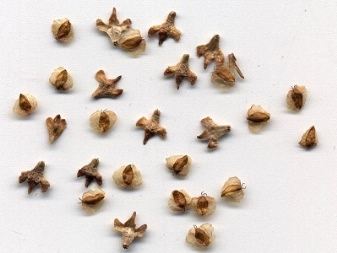
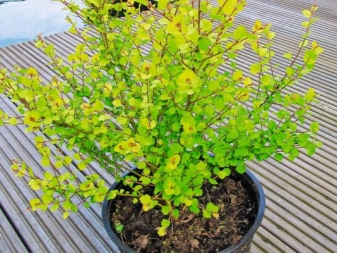
The landing order is as follows:
- a few days before the procedure, a hole is pulled out with a width of 100 - 150 cm;
- the bottom layer of soil is removed;
- the upper part of the soil mass is mixed with a special substrate, which excludes contact of the roots with humus or mineral mass.
The following are used as a substrate:
- peat;
- humus;
- garden land;
- selected correctly mineral fertilizers;
- clean washed river sand.
If possible, the root ball is saved during the planting process. In the absence of it, the roots are initially soaked in water for several hours. The drainage layer is formed from:
- rubble;
- expanded clay;
- pebbles of fine fraction.
0.15 - 0.2 m is sufficient for the required drainage characteristics. After that, a mound is poured from the soil mixture, in the middle of which a seedling can be laid. Watch carefully so that he is not oriented to the side. The rest of the potting mix needs to be compacted a little. The planted bush is immediately watered, and then mulched (optional).
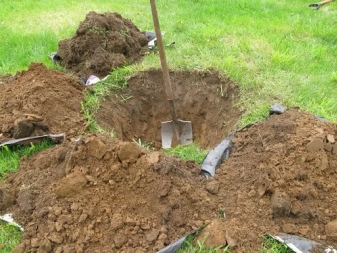
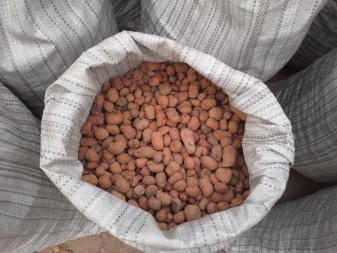
Care rules
Watering
Irrigation is a very important condition, without which it is almost impossible to grow a dwarf birch. It is worth noting that the aforementioned tendency of a plant to rot from waterlogging does not mean that it can be kept dry. Moreover, even a slight drying out of the soil is unacceptable. This is not easy to achieve - nevertheless, a dwarf birch can evaporate up to 250 liters of water per season. But if water already accumulates in the right place, irrigation is done only in the summer months.
Fertilizer
With the beginning of the growing season, fertilizers are laid on a nitrogen basis or a complex composition. A good alternative is to use compost or humus. In the autumn months, nitroammofoska or its analogs are added to the ground. Note: Regardless of the original nutritional value, annual replenishment is required.
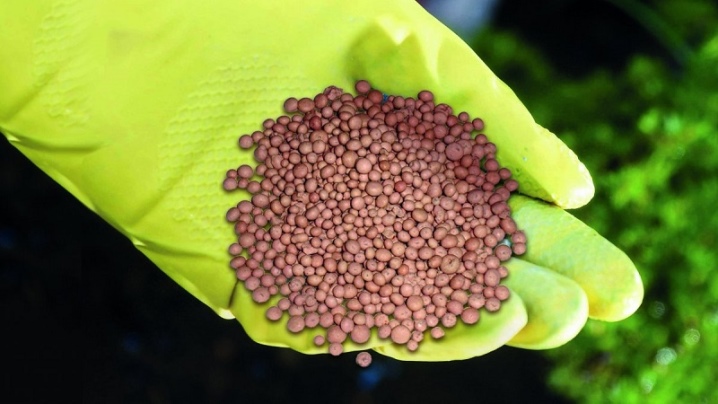
Pruning
The shrub is capable of forming dense and dense thickets. You need to trim it regularly, and already from the second year of development. Be sure to cut out:
- sick;
- deformed and withered shoots.
The procedures are carried out before the movement of juices begins, that is, as early as possible in the spring. At the same time, they are usually engaged in the formation of the crown. Pruning to the desired shape is sometimes done in the last summer month.In any case, dwarf birch tolerates this procedure exceptionally well. For work, they use a banal secateurs.
Reproduction
Since dwarf birch develops normally in the tundra, then in the middle lane it will not experience any problems. Sowing seeds in the fall should be done after the first early frosts. It is easier, however, to propagate the culture by a vegetative method. They just take the twigs directly from the bush. They are kept in water until roots are formed, and immediately after that, they are transplanted into free soil.

Diseases and pests
Insecticide treatment helps to prevent damage to plantings in advance. If this was not done on time, you should be wary of attacks:
- goldsmiths;
- aphids;
- linden hawk moth;
- moth.
At the first symptoms of an attack, special drugs should also be used. Available in the arsenal of any responsible gardener "Aktellik" and "Aktara" help out. You can also take the lesser-known "Confidor", "Envidor" and "Karate". For your information: the most aggressive pest is the scoop, the May beetle is only slightly inferior to it. The application of insecticides is mandatory as soon as at least one of them is seen.
Dwarf birch often suffers from fungi and other infections. But this is not a problem for experienced gardeners - any universal fungicides help out. Ideally, special prophylaxis against pests and pathologies should be carried out once a month. This is usually enough to rule out any problems. The plant is quite resistant to the notorious "chemistry" if you follow the instructions.
It is also worth taking care of protection from:
- thrips;
- silkworms;
- leaf sawflies;
- powdery mildew infection.
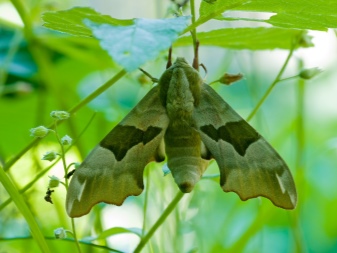
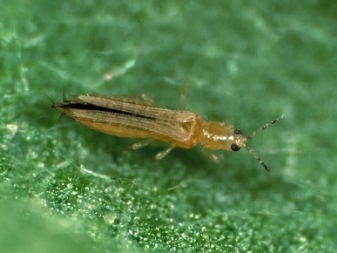
Application in landscape design
Dwarf birch is not used very often in the garden. The difficulty is obvious: gardeners know little how to work with it correctly, and what to combine with. However, professionals know a number of tricks and, above all, the fact that this plant is maximally flexible in combination with most other species. Yernik gives an excellent result on an alpine slide (rockery). The main thing is that at the same time not only the landscape should be recreated, but also the natural vegetation should be reproduced.
Dwarf birch becomes an excellent semantic center of the composition. Its leaves are an excellent backdrop for other crops. An alternative is a Japanese garden. A miniature shrub will decorate the composition of pebbles and cobblestones. It is very good if it is supplemented with heather. In some cases, planting is carried out near a reservoir, then a dwarf birch will help mimic the natural origin of a stream or pond.
In addition to planting it on the shore of the reservoir, it is advised to use:
- gentian;
- badan;
- saxifrage.
A "corner of the tundra" can also be an excellent choice. It is logical to equip it where there is a "swamp" in the spring. It is pointless to plant other garden and horticultural crops in this place, but a dwarf birch will endure a similar effect. You can enter as additives:
- miniature ferns;
- cranberries;
- moss (in their environment, the shrub is perceived organically).
Tiny bushes can also form an excellent hedge. But it does require a regular haircut. Otherwise, branching is simply impossible. The plant fence will be very dense, but very low.
It is impossible to count on a reliable protective effect - but the decorative properties are very high.
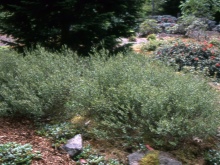
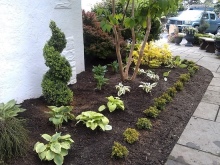
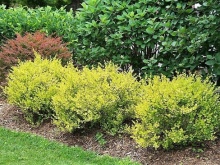
In the next video you will find a short overview of the Golden Treasure dwarf birch.



































































The comment was sent successfully.